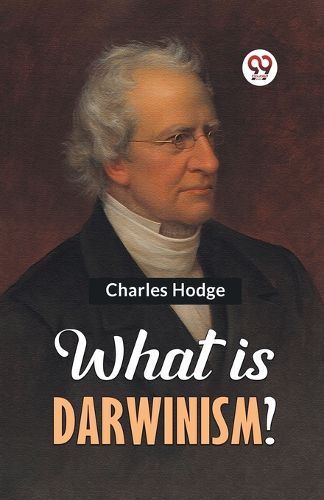Readings Newsletter
Become a Readings Member to make your shopping experience even easier.
Sign in or sign up for free!
You’re not far away from qualifying for FREE standard shipping within Australia
You’ve qualified for FREE standard shipping within Australia
The cart is loading…






This title is printed to order. This book may have been self-published. If so, we cannot guarantee the quality of the content. In the main most books will have gone through the editing process however some may not. We therefore suggest that you be aware of this before ordering this book. If in doubt check either the author or publisher’s details as we are unable to accept any returns unless they are faulty. Please contact us if you have any questions.
"What is Darwinism?" is a tremendous work authored by way of Charles Hodge, an influential 19th-century American Presbyterian theologian. Published in the late 19th century, this book significantly examines the emerging principle of Charles Darwin, referred to as Darwinism, which laid the inspiration for contemporary evolutionary biology. Charles Hodge, a staunch endorse of Christian orthodoxy, approached Darwinism from a non-secular and theological perspective. In the book, Hodge scrutinizes the key tenets of Darwin's concept of evolution, which include natural selection and the descent of species from common ancestors. He argues towards those ideas, putting forward that they battle with the traditional Christian belief in divine introduction as described inside the Bible. Hodge's paintings are marked with the aid of a rigorous protection of biblical literalism and a rejection of the concept that life advanced via a naturalistic manner. He contends that Darwinism undermines the theological underpinnings of Christianity and raises profound questions about the relationship between technology and religion. While "What is Darwinism?" represents a conservative spiritual attitude that is at odds with evolutionary theory, it serves as a valuable ancient report, reflecting the non-secular and intellectual debates of the 19th century. It additionally highlights the continued communicate and anxiety among technological know-how and faith that keeps to shape discussions at the principle of evolution to at the moment.
$9.00 standard shipping within Australia
FREE standard shipping within Australia for orders over $100.00
Express & International shipping calculated at checkout
This title is printed to order. This book may have been self-published. If so, we cannot guarantee the quality of the content. In the main most books will have gone through the editing process however some may not. We therefore suggest that you be aware of this before ordering this book. If in doubt check either the author or publisher’s details as we are unable to accept any returns unless they are faulty. Please contact us if you have any questions.
"What is Darwinism?" is a tremendous work authored by way of Charles Hodge, an influential 19th-century American Presbyterian theologian. Published in the late 19th century, this book significantly examines the emerging principle of Charles Darwin, referred to as Darwinism, which laid the inspiration for contemporary evolutionary biology. Charles Hodge, a staunch endorse of Christian orthodoxy, approached Darwinism from a non-secular and theological perspective. In the book, Hodge scrutinizes the key tenets of Darwin's concept of evolution, which include natural selection and the descent of species from common ancestors. He argues towards those ideas, putting forward that they battle with the traditional Christian belief in divine introduction as described inside the Bible. Hodge's paintings are marked with the aid of a rigorous protection of biblical literalism and a rejection of the concept that life advanced via a naturalistic manner. He contends that Darwinism undermines the theological underpinnings of Christianity and raises profound questions about the relationship between technology and religion. While "What is Darwinism?" represents a conservative spiritual attitude that is at odds with evolutionary theory, it serves as a valuable ancient report, reflecting the non-secular and intellectual debates of the 19th century. It additionally highlights the continued communicate and anxiety among technological know-how and faith that keeps to shape discussions at the principle of evolution to at the moment.